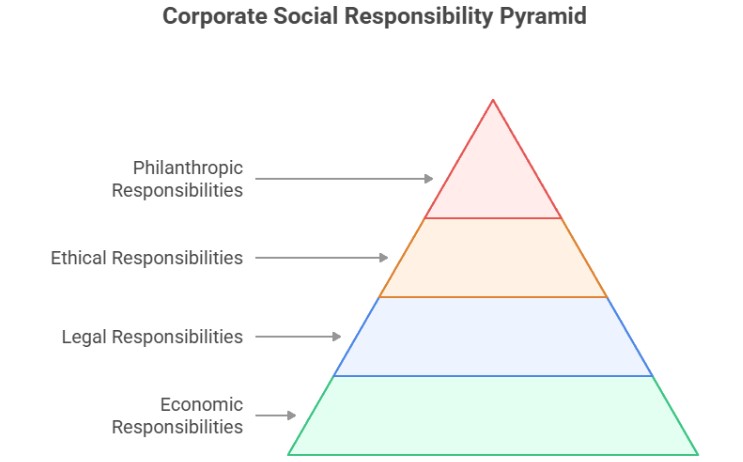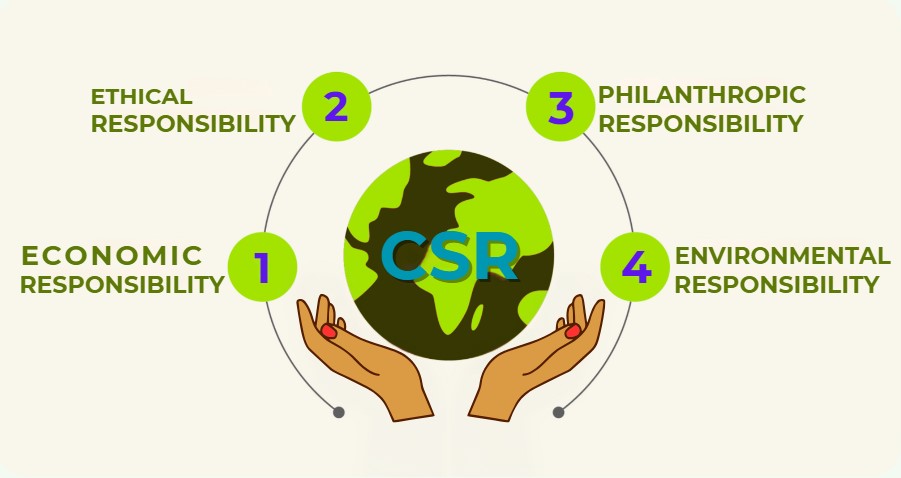Corporate Social Responsibility, often shortened to CSR, has become a core part of how modern companies operate. For many businesses, it is no longer enough to simply comply with the law or maximize profits. Communities, customers, and employees increasingly expect companies to contribute to the places where they operate.
Supporting local projects is one of the clearest ways to meet that expectation, and it is guided by a mix of voluntary standards, international frameworks, and in some cases, legal requirements.
Today, we will discuss the rules and guidelines that shape how companies support local projects, with a focus on practical steps, global standards like ISO 26000, and examples that show how effective CSR works.
Table of Contents
ToggleKey Highlights
- CSR supporting local projects goes beyond donations – it involves active community engagement, stakeholder dialogue, and alignment with real local needs (e.g. education, job training, health, infrastructure).
- ISO 26000 sets out seven core subjects, including community involvement and development, that guide socially responsible business behavior, but does not allow certification.
- Companies are also guided by frameworks like the UN Global Compact, GRI, and the UN Sustainable Development Goals – helping align CSR actions with transparency and reporting standards.
- Implementing effective local CSR involves assessing community needs, setting SMART objectives, partnering locally, engaging employees, allocating budget, and tracking impact transparently.
Why Supporting Local Projects Matters in CSR

Corporate Social Responsibility encompasses a company’s efforts to create positive impacts on society, the environment, and the communities around it. Supporting local projects is a direct expression of that responsibility.
When a company invests in its community, the benefits flow both ways: the local area gains resources, opportunities, or infrastructure, and the company earns trust, loyalty, and a stronger reputation.
Research reinforces the impact of local CSR. A 2023 study revealed that 77% of consumers prefer to buy from brands that show clear commitments to positive social impact.
Beyond brand perception, companies that actively engage with local projects often gain a “social license to operate” – the informal community acceptance that helps businesses thrive without conflict or resistance.
Common benefits for both sides include:
- Communities gain support for education, health, jobs, and infrastructure.
- Companies enhance their public image, strengthen employee pride, and attract talent.
- Long-term development becomes possible, with businesses contributing to Sustainable Development Goals (SDGs).
Supporting a local school, hosting job training programs, or funding healthcare initiatives all create tangible improvements for residents and sustainable goodwill for the company.
ISO 26000: The Global Guide for Social Responsibility
One of the most recognized resources for companies developing CSR strategies is ISO 26000, introduced in 2010 by the International Organization for Standardization.
Unlike other ISO standards, it is not certifiable, but it serves as a comprehensive guide to socially responsible practices.
ISO 26000 outlines seven core subjects of social responsibility:
- Organizational governance
- Human rights
- Labor practices
- The environment
- Fair operating practices
- Consumer issues
- Community involvement and development
The last one is directly relevant for local projects. ISO 26000 encourages companies to move beyond financial donations and become active participants in community development.
Key Areas of Community Involvement
ISO 26000 breaks community support into actionable focus areas:
| Area | Description | Examples |
|---|---|---|
| Community Involvement | Participating in local initiatives and decision-making | Sponsoring local festivals, attending community forums |
| Education and Culture | Supporting education and cultural projects | Donating school supplies, funding cultural events |
| Employment and Skills Development | Creating local jobs and providing skill-building opportunities | Apprenticeships, vocational training partnerships |
| Technology Development and Access | Expanding access to technology and bridging digital divides | Providing Wi-Fi access, coding workshops |
| Wealth and Income Creation | Supporting sustainable economic growth in the area | Microfinance programs, small business support |
| Health | Improving local health and wellness | Funding clinics, health awareness campaigns |
| Social Investment | Investing in long-term community infrastructure | Building community centers, clean water projects |
Rather than focusing solely on donations, ISO 26000 emphasizes active participation and dialogue with communities, ensuring projects align with local priorities and create lasting benefits.
Steps to Implement CSR for Local Projects
Following CSR guidelines is not just about compliance. It involves thoughtful planning, collaboration, and ongoing engagement. A practical roadmap often includes:
1. Assess Community Needs
Companies start by listening. Surveys, focus groups, and stakeholder meetings help identify the most pressing local priorities.
Example: A manufacturing firm might learn that the local community needs better access to STEM education.
2. Set SMART Objectives
CSR initiatives work best with goals that are Specific, Measurable, Achievable, Relevant, and Time-bound.
Example: Providing 50 annual scholarships for underprivileged students within three years.
3. Build Local Partnerships
Collaborate with nonprofits, local governments, and community organizations. Partnerships help projects scale and sustain themselves.
Example: Partnering with a vocational school to offer skill certification programs.
4. Engage Employees
Employee volunteering programs and skill-based contributions bring internal teams closer to the community.
Example: Company engineers helping design affordable housing.
5. Allocate Resources
Set aside a dedicated budget or percentage of profits for CSR activities. Some companies even create community investment funds.
6. Monitor and Report
Use key performance indicators (KPIs) to track impact, then report transparently.
A report highlighted that 93% of Russell 1000 companies now publish CSR reports, compared to only 20% a decade ago.
Examples of Companies Excelling in Local CSR

Several organizations demonstrate how aligning with CSR rules and ISO 26000 principles translates into real impact:
Microsoft YouthSpark
A global initiative that supports youth education and employment opportunities. Millions of students have benefited through digital skills programs, advancing ISO 26000’s goals in education and skills development.
Patagonia’s Local Environmental Projects
Known for environmental activism, Patagonia donates a portion of sales to local conservation and encourages community participation in sustainability efforts.
Google’s Computer Science Education Outreach
By offering coding workshops and school partnerships, Google addresses technology access gaps and prepares local communities for digital futures.
Soft2Bet
Another example is Soft2Bet, which has publicly highlighted its commitment to innovation and giving back to communities. To see how it celebrates its achievements and local impact, visit mininggazette.com.
Other Frameworks That Guide Community Support

While ISO 26000 is a strong reference point, other global frameworks provide structure and visibility for CSR efforts:
1. United Nations Global Compact (UNGC)
Encourages companies to align with principles in human rights, labor, environment, and anti-corruption. While community support is indirect, promoting ethical and sustainable practices benefits local areas.
2. Global Reporting Initiative (GRI)
Provides a widely used framework for sustainability and CSR reporting, helping companies disclose community investments and track progress.
3. United Nations Sustainable Development Goals (SDGs)
Goals like No Poverty, Quality Education, and Sustainable Cities and Communities tie directly to local project support. Aligning CSR activities with SDGs demonstrates both local and global commitment.
Legal and Regional CSR Rules

Some regions go further than voluntary guidelines, embedding CSR in law:
India’s Companies Act, 2013
Companies with net profits above 5 crore INR must spend at least 2% of their average net profits on CSR activities, often directed toward education, healthcare, and local development.
European Union Non-Financial Reporting Directive (NFRD)
Requires large companies to disclose their social and environmental activities, including community engagement, ensuring transparency and accountability.
Legal rules often complement voluntary initiatives by creating a baseline of responsibility, while leaving room for companies to customize efforts to local needs.
Challenges and Best Practices for Supporting Local Projects

Even with clear guidelines, implementing CSR for local projects can face hurdles. Some common challenges include:
- Matching initiatives to real community needs
- Ensuring projects are sustainable rather than one-off donations
- Maintaining transparency and measurable outcomes
- Respecting local culture and traditions in project design
Best practices to overcome these challenges include:
- Conduct regular stakeholder consultations to keep projects relevant.
- Integrate CSR into the core business strategy, rather than treating it as a side activity.
- Use data and reporting to track real-world results and adjust efforts.
- Focus on capacity-building, so communities can sustain benefits even without ongoing corporate funding.
A 2019 study in Uruguay showed that companies using ISO 26000’s community engagement principles earned higher levels of community trust, especially when they prioritized active participation and regular dialogue.
Final Thoughts
Supporting local projects through CSR is more than a moral gesture. It is a strategic, long-term approach to building stronger communities and resilient businesses. Standards like ISO 26000 give companies a clear framework to follow, guiding actions in education, job creation, technology access, health, and social investment. Complementing these efforts with UNGC principles, GRI reporting, SDG alignment, and regional legal compliance ensures both local impact and global credibility.
Companies that approach CSR as a meaningful partnership with their communities – instead of a box-ticking exercise – create lasting value for everyone involved. The result is not only stronger neighborhoods and towns, but also a business reputation rooted in trust and purpose.
Related Posts:
- How Many International Airports Are There In The US in 2025?
- Safest Countries in the World in 2025 - GPI…
- What ICE Does and Why It Matters - U.S. Immigration…
- Capital Cities in Europe: Top Destinations For You…
- How Many Employees Does Target Corporation Employ?
- SEC Allows Public Companies to Push Shareholder…








